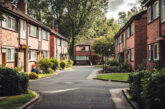
In this regular column, ‘Dr Zzeus’ Tom Brookes, MD of Zzeus Training and chairman of the FSA, answers your questions related to fire safety. In this month’s edition he looks at some of the changes that will be introduced as part of the new fire alarm standard.
Q. In the draft for public comments, I noticed that the new 2025 fire alarm standard BS 5839-1:2025, which was due for release in April, has changed the competency clause. Is this to be in line with the BAFE Scheme?
In short, yes, the competency clause has changed. The new standard should have arrived at the end of April and contains several changes. There are too many changes to list them all here, but I will highlight a few of them:
Clause 3.13:
competent person
Person, suitably trained and qualified by knowledge and practical experience, and provided with the necessary instructions, to enable the required task(s) to be carried out correctly.
Note: Maintenance of competence is likely to require continuing professional development (CPD).
(Source: BS 9991:2024, 3.4, modified – note added)
This is represents a big step forward, and I would like to thank Will Lloyd, the FIA’s Technical Manager, for his support in making this change a standard.
So now, in line with BS 9991 Fire safety in the design, management and use of residential buildings, BS 5839-1:2025 has a beefed-up competence requirement. The first part is that you must be suitably trained, so training is required on the current standard, equipment being used, wiring considerations for installers etc.
Next, you will be qualified by knowledge and practical experience. This is important, as you must prove your theoretical knowledge (training and qualifications) and practical experience.
You should also be provided with the necessary instructions to enable the required task(s) to be carried out correctly. These will take the form of equipment instructions, standards, design specs, drawings, etc., to enable you to design, install, and commission a fire system to the latest standards. The critical word here is ‘correctly’.
Finally, the note states that you will need to complete CPD hours to maintain your competence.
So, in reality, you are now going to have to prove the aforementioned items to be classed as a competent fire system technician.
I feel that a couple of points in the ‘Use of this document’ section are worthy of mention. It states that it is a code of practice and that ‘Users are expected to ensure that Claims of compliance are not misleading’.
In a nutshell, if you state that it fully meets BS 5839-1:2025 category 2, it should meet every recommendation unless you state a variation.
In this section, we assume that the users of this standard will be appropriately qualified and competent people. This means that if you’re to use this standard to install or maintain a fire system, you should have qualifications in fire alarm and detection and be competent.
In scope, it states that this standard doesn’t cover temporary fire detection and fire alarm systems. So, if you’re installing any temporary fire alarm system, you can’t claim it meets BS 5839-1:2025.
Clause 6.6 states that three things now should not be allowed as a variation to exclude from your system – where there is more than one storey, particularly where people sleep.
a) A zone plan or suitable diagrammatic representation is allowed in clause 22.2.5.
b) The absence of an ARC connection in supported housing or residential care homes.
Clause 7.9 no longer allows stairway lobbies to be areas of low risk, so they will now need detection.
Clause 14.2.2 recommends that if your system is connected to an ARC, a label should be placed on the front of the panel stating so, with a contact number provided.
Please note that this article was written before official publication of the standatd. As a result, some of the highlighted items could be changed if there was any legal challenge before the release date.
Catch up on previous ‘Dr. Zzeus Q&A’ articles here








